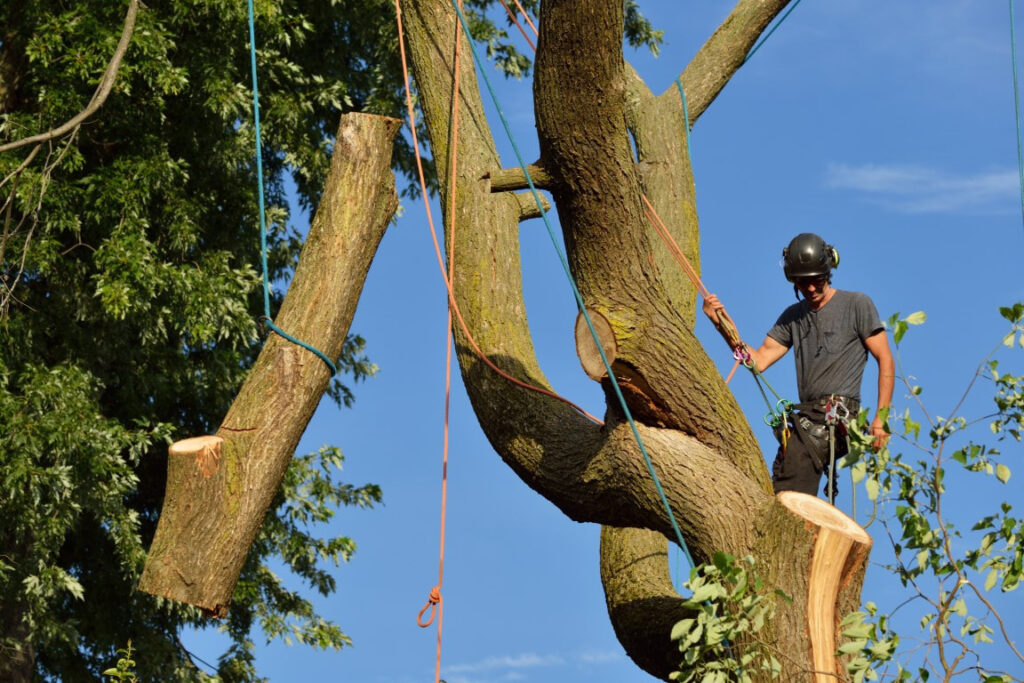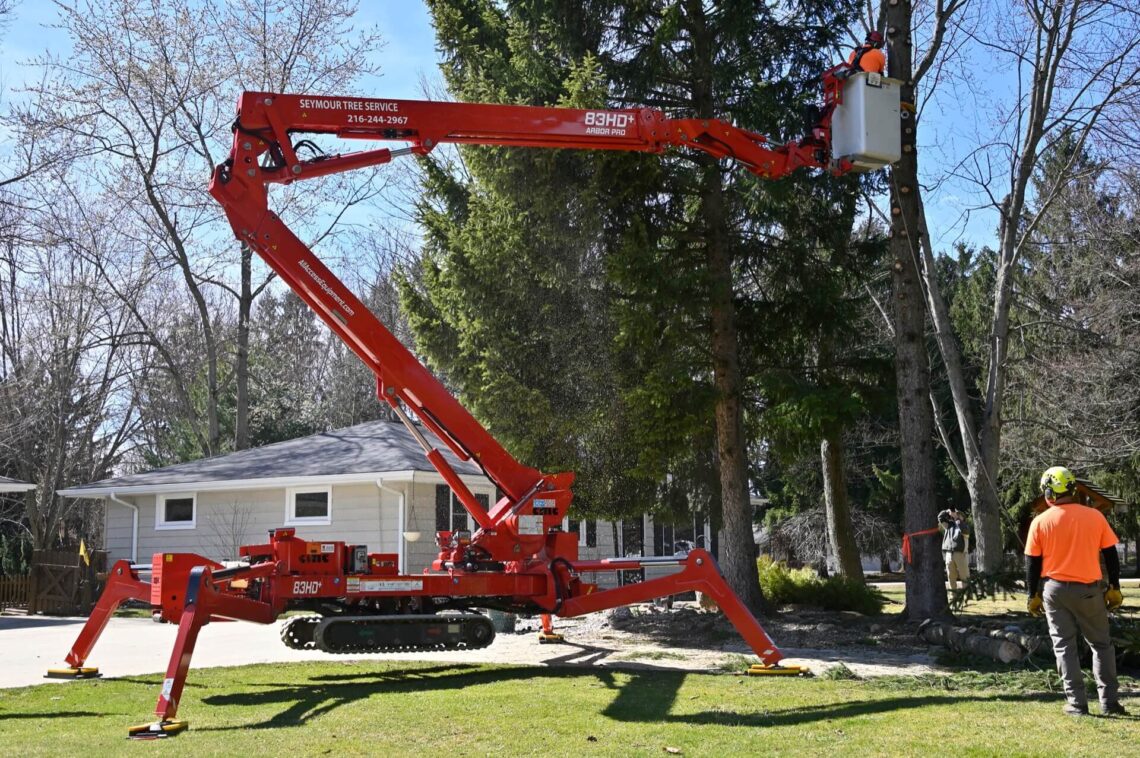Trees are an essential part of Sydney’s natural beauty and urban landscape. They provide shade, improve air quality, and add aesthetic value to our surroundings. However, like any living organism, trees require care and maintenance to ensure their health and vitality. One crucial practice in tree maintenance is pruning. Tree pruning plays a significant role in enhancing both the health and aesthetics of trees. Understanding the importance of tree pruning is key to the overall well-being of our urban forests.
Understanding the Importance of Tree Pruning
Tree pruning services is more than just trimming branches for cosmetic purposes. It is a horticultural practice that involves selectively removing specific parts of a tree, such as branches, buds, or roots, to promote healthier growth. Pruning helps to maintain a tree’s structural integrity, prevent disease, and encourage new and robust growth.
The Connection Between Pruning and Tree Health
Pruning directly impacts the health of trees by removing dead or dying branches that can harbor pests or diseases. By eliminating these potential breeding grounds for pathogens, pruning reduces the risk of infections that could spread throughout the tree. Additionally, the removal of diseased or damaged branches allows the tree to allocate its resources more efficiently, promoting overall vitality.
When a tree is pruned, it not only eliminates the diseased or dying parts but also stimulates the growth of new, healthy branches. This process encourages the tree to develop a stronger and more resilient structure. By removing weak or crossing branches, pruning helps to prevent structural issues, such as branch breakage or tree leaning. This is particularly important for larger trees that may pose a risk to property or people if not properly maintained.

Furthermore, pruning can also improve air circulation within the tree’s canopy. When branches are densely packed, air movement is restricted, creating a favorable environment for fungal diseases. By selectively removing branches, pruning allows for better airflow, reducing the likelihood of fungal infections and promoting overall tree health. You can also visit https://baldwinhillspark.info/stump-grinding-sydney-professional-services-for-stubborn-stumps/ to get about professional stump grinding services for stubborn stumps.
How Pruning Enhances Aesthetics
In addition to its impact on tree health, pruning also plays a crucial role in enhancing the aesthetics of trees. By removing excess growth, pruning helps to maintain a balanced and visually appealing tree structure. Properly pruned trees are more symmetrical, allowing for a better distribution of foliage and a neater appearance. This not only contributes to the overall beauty of a tree but also enhances its integration into the surrounding landscape.
Pruning can also be used to shape trees, creating unique and artistic forms. This technique, known as topiary, has been practiced for centuries and is often used in formal gardens or as decorative elements in landscapes. By skillfully pruning a tree, it is possible to create intricate shapes, such as spirals, cones, or animal figures, adding a touch of whimsy and creativity to the outdoor space.
Moreover, pruning can help to control the size of a tree, making it more suitable for its surroundings. In urban areas, where space is limited, pruning can prevent trees from outgrowing their designated areas. By selectively removing branches, the overall size of the tree can be reduced, ensuring that it remains in proportion to its surroundings. This is particularly important for street trees, where overhead clearance and visibility are crucial for pedestrian and vehicular safety.
Overall, tree pruning is a vital practice that goes beyond mere aesthetics. It is a proactive measure to ensure the health, safety, and beauty of trees. By understanding the importance of pruning, we can contribute to the well-being of our trees and create a more harmonious and visually pleasing environment.
The Science Behind Tree Pruning
Pruning is not a one-size-fits-all practice. It requires an understanding of tree biology, growth patterns, and various pruning techniques. For optimal results, it is essential to consider the right time to prune as well as the specific requirements of different tree species.
Tree pruning is a delicate art that involves careful consideration of the tree’s biology and growth patterns. By understanding how trees grow and respond to pruning, arborists can effectively shape and maintain healthy trees.
The Right Time to Prune Trees
The timing of tree pruning can significantly impact its effectiveness. While some trees may benefit from pruning during the dormant season, others require pruning immediately after flowering. Pruning at the appropriate time ensures that trees experience minimal stress and have the best chance for successful healing and new growth.
During the dormant season, when trees are not actively growing, pruning can help remove dead or diseased branches, improve the tree’s structure, and stimulate new growth. This period of dormancy allows the tree to focus its energy on healing wounds and developing strong, healthy branches.
On the other hand, certain tree species, such as fruit trees, need to be pruned right after flowering. This timing allows for the removal of spent flowers and encourages the tree to redirect its energy towards fruit production.
Pruning Techniques for Different Tree Species
Each tree species has its own unique growth characteristics and requirements. Pruning techniques should be tailored to these specific needs. Some trees, such as deciduous species, respond well to more aggressive pruning, while others, like evergreens, require a more cautious approach. Understanding these differences and employing the correct techniques is crucial to achieving the desired results.
Deciduous trees, which shed their leaves in the fall, can tolerate more extensive pruning. This includes crown thinning, crown reduction, and even crown raising. These techniques help improve air circulation, reduce the risk of disease, and maintain the tree’s overall health and appearance.

Evergreen trees, on the other hand, have a different growth pattern and require a more delicate touch when pruning. Pruning evergreens should focus on selective branch removal, maintaining their natural shape, and promoting overall density. Careful consideration should be given to avoid removing too much foliage, as it can lead to stress and potential dieback.
When pruning different tree species, it is also important to consider their growth habits. Some trees, like conifers, have a dominant central leader and require minimal pruning to maintain their natural form. Other trees, such as multi-stemmed shrubs, may benefit from more frequent and selective pruning to promote a balanced and aesthetically pleasing shape.
In conclusion, tree pruning is a science that requires knowledge of tree biology, growth patterns, and the specific needs of different tree species. By understanding the right time to prune and employing the appropriate techniques, arborists can help trees thrive and maintain their health and beauty for years to come.
The Role of Professional Tree Pruners
When it comes to tree pruning, hiring a professional arborist or tree pruner is often the best course of action. These experts have the knowledge, experience, and specialized tools needed to ensure safe and effective pruning.
Tree pruning is a crucial aspect of tree care that involves the selective removal of branches to improve the tree’s structure, health, and aesthetics. While it may seem like a simple task, improper pruning can cause significant damage to the tree and even lead to its decline or death. That is why it is essential to entrust this job to professionals who understand the intricacies of tree biology and have the expertise to perform the task correctly.
Professional tree pruners possess the expertise to assess a tree’s condition accurately and determine the most suitable approach to pruning. They have an in-depth understanding of tree biology and can identify potential issues that an untrained eye may overlook. By carefully evaluating the tree’s health, structure, and growth patterns, they can develop a customized pruning plan that addresses the specific needs of each tree.
Moreover, professional tree pruners adhere to industry best practices, which prioritize tree health and safety. They are knowledgeable about the different pruning techniques and know when and how to apply them. Whether it’s crown thinning, crown raising, or crown reduction, they have the skills and experience to execute these techniques properly, ensuring that the tree remains healthy and structurally sound.
Why Hire a Professional Tree Pruner?
There are several reasons why hiring a professional tree pruner is highly recommended. Firstly, they have the necessary tools and equipment to perform the job safely and efficiently. Tree pruning often involves working at heights and using sharp tools, which can be dangerous for an inexperienced individual. Professional tree pruners are trained in proper safety protocols and have the right equipment, such as harnesses, ropes, and pruning saws, to ensure their safety and the safety of your property.
Secondly, professional tree pruners can save you time and effort. Pruning a tree can be a time-consuming and physically demanding task, especially if you have multiple trees or large specimens. By hiring professionals, you can free up your time and energy for other important tasks while ensuring that your trees receive the care they need.
Lastly, professional tree pruners can provide valuable advice and guidance on tree care. They can offer recommendations on tree species selection, planting techniques, and ongoing maintenance to help you maximize the health and longevity of your trees. Their expertise can be particularly beneficial if you have specific goals in mind, such as creating a more open view, improving sunlight penetration, or enhancing the overall aesthetics of your landscape.

What to Expect from a Tree Pruning Service
When engaging a professional tree pruning service, you can expect a thorough consultation to assess your tree’s needs. The arborist will discuss pruning goals, address any concerns you may have, and provide a detailed plan of action. They will take into consideration factors such as the tree’s species, age, size, location, and overall health to determine the most appropriate pruning approach.
During the pruning process, professional tree pruners will employ precise techniques to ensure minimal impact on the tree and its surrounding environment. They will carefully select the branches to be pruned, taking into account factors such as branch structure, growth direction, and potential impact on the tree’s stability. By making strategic cuts, they can promote healthy growth, reduce the risk of disease or pest infestation, and enhance the tree’s natural form and beauty.
Furthermore, professional tree pruners will clean up the pruning debris and ensure that your property is left in a neat and tidy condition. They will dispose of the branches and leaves properly, either by chipping them for mulch or hauling them away for proper disposal. This attention to detail and commitment to cleanliness is another advantage of hiring professionals for your tree pruning needs.
In conclusion, professional tree pruners play a vital role in maintaining the health, safety, and beauty of your trees. Their expertise, experience, and specialized tools enable them to perform pruning tasks with precision and care. By hiring professionals, you can ensure that your trees receive the proper care they deserve, leading to their long-term vitality and enhancing the overall appeal of your landscape.
Safety Measures in Tree Pruning
Tree pruning involves working at heights and handling sharp tools, making it potentially hazardous. Prioritizing safety is paramount to minimize the risk of accidents and injuries during the pruning process.
Personal Safety During Tree Pruning
Pruning trees often requires climbing or using elevated platforms. It is crucial for tree pruners to wear appropriate personal protective equipment (PPE) such as helmets, gloves, and harnesses to mitigate the risk of falls or injuries. Proper training and adherence to safety guidelines are imperative to guarantee the well-being of those involved.
Ensuring the Safety of Your Property
Tree pruning has the potential to pose risks to nearby structures, power lines, and other property. Hiring a professional tree pruner not only protects your safety but also safeguards your property from potential damage. Professionals know how to navigate tight spaces, use proper equipment, and employ safe trimming techniques to minimize any hazards.
The Impact of Tree Pruning on Sydney’s Urban Landscape
The benefits of tree pruning extend beyond individual trees. They have a profound impact on the overall health and aesthetics of Sydney’s urban landscape, contributing to a better quality of life for residents.
Pruning and Urban Tree Management
Tree pruning plays a vital role in maintaining healthy and well-managed urban forests. Regular pruning ensures that trees remain structurally sound, reducing the risk of branch breakage during storms or severe weather events. It also helps to create open spaces within the tree canopy, allowing for improved air circulation and light penetration, benefiting both trees and surrounding vegetation.
The Future of Tree Pruning in Sydney
As Sydney continues to grow and develop, the importance of tree pruning will only increase. With proper planning, management, and professional expertise, tree pruning can contribute to the preservation and expansion of Sydney’s urban greenery. By prioritizing tree health and aesthetics, we can ensure a vibrant and sustainable urban landscape for generations to come.






